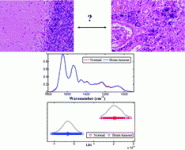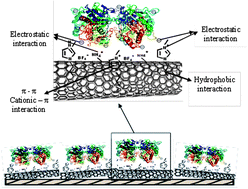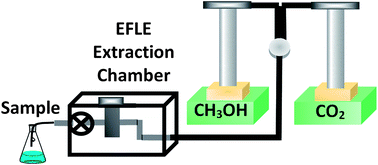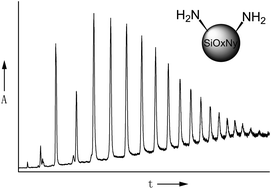Take a look below at some wonderful HOT articles we’ve recently published this month in Analytical Methods. There are papers covering a large variety of fields, including seaweed analysis, continuous channel flow linear dichroism, immunosensors and environmental monitoring. These papers will be free to read for two weeks.


Determination of cysteamine using label-free gold nanoparticles
Vladimir V. Apyari, Stanislava G. Dmitrienko, Viktoriya V. Arkhipova, Aydar G. Atnagulov and Yuri A. Zolotov
Anal. Methods, 2012, Advance Article
DOI: 10.1039/C2AY25675D
Continuous-channel flow linear dichroism
Xi Cheng, Maxim B. Joseph, James A. Covington, Timothy R. Dafforn, Matthew R. Hicks and Alison Rodger
Anal. Methods, 2012, Advance Article
DOI: 10.1039/C2AY25513H
Determination of iodine species in seaweed and seawater samples using ion-pair reversed phase high performance liquid chromatography coupled with inductively coupled plasma mass spectrometry
Xu Han, Lianghui Cao, Heyong Cheng, Jinhua Liu and Zigang Xu
Anal. Methods, 2012, Advance Article
DOI: 10.1039/C2AY25871D
Creating mass signatures for the detection of microRNA
Dickson M. Wambua, Bakhos A. Tannous and Norman H. L. Chiu
Anal. Methods, 2012, Advance Article
DOI: 10.1039/C2AY25504A
Simultaneous determination of Pb(II) and Cd(II) using an electrode modified with electropolymerized thiadiazole film
Changzhi Zhao, Hui Liu and Li Wang
Anal. Methods, 2012, Advance Article
DOI: 10.1039/C2AY25525A
Reagentless amperometric immunosensor for α-1-fetoprotein based on assembly of nano-Au@SiO2 composite
Xiaomei Huang, Xiang Deng and Di Wu
Anal. Methods, 2012, Advance Article
DOI: 10.1039/C2AY25778E
Improvement in accuracy and specificity of high-throughput sialic acid assay
Lam Raga A. Markely, Kanvasri N. Jonnalagadda, Martin Sinacore, Thomas Ryll and Shashi Prajapati
Anal. Methods, 2012, Advance Article
DOI: 10.1039/C2AY25448D
An approach toward quantification of organic compounds in complex environmental samples using high-resolution electrospray ionization mass spectrometry
Tran B. Nguyen, Sergey A. Nizkorodov, Alexander Laskin and Julia Laskin
Anal. Methods, 2012, Advance Article
DOI: 10.1039/C2AY25682G
Surface plasmon resonance imaging of the enzymatic degradation of cellulose microfibrils
Scott G. Allen, Oleh M. Tanchak, Amanda Quirk, Adam N. Raegen, Kyle Reiter, Rebecca Whitney, Anthony J. Clarke, Jacek Lipkowski and John R. Dutcher
Anal. Methods, 2012, Advance Article
DOI: 10.1039/C2AY25762A















